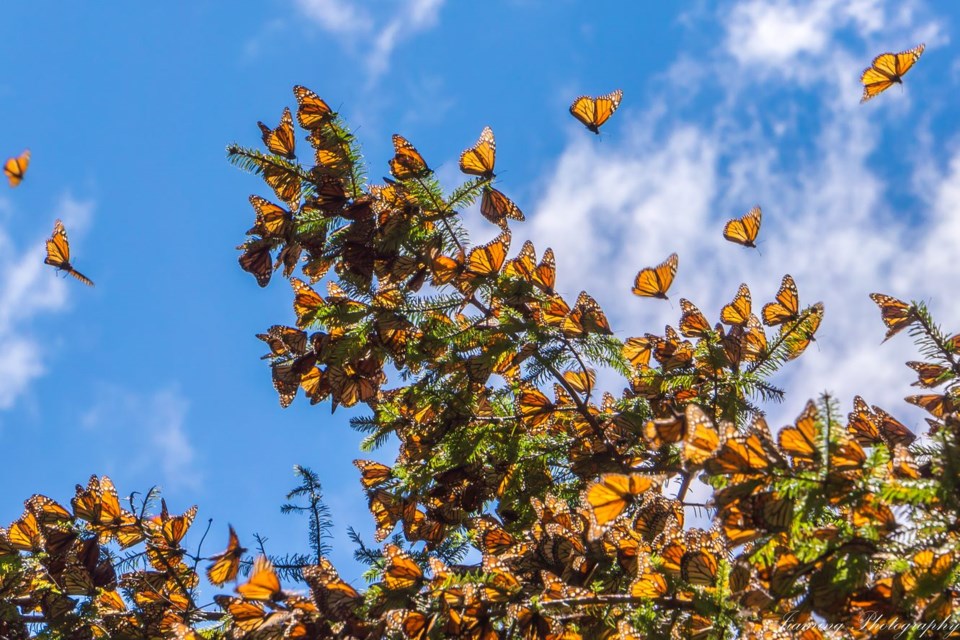The Broomfield Leader accepts contributions, photos, letters to the editor, or LTEs, and op-eds for publication from community members, business leaders and public officials on local topics. Publication will be at the discretion of the editor and published opinions do not represent the views of the Broomfield Leader or its staff. To submit a contribution, email [email protected].
The North American November is a time of change: leaves turn and then fall, days shorten, temperatures drop. Our favorite sights that were common in the summer, like wildflowers and butterflies, are replaced by the muted colors of winter. We may miss the buzzing bees and the hummingbird moths in the next few months, but we can rest assured knowing winter will eventually yield to spring and our beloved songbirds and swallowtails will once again visit our gardens… but what if they didn’t? What would it mean, not only for the ecosystem, but to you?
One hundred kilometers outside of my hometown of Panama City, nestled among the India Dormida range, right in the center of an ancient volcano, hid the sleepy town of El Valle de Anton. The valley’s cool and humid cloud forest climate allows for some of the region’s most unique flora and fauna, and the colorful nature has been deeply tied to the area. El Valle’s central market has lively alleys full of produce and crafts. Among the art pieces in straw and clay, one symbol reigned above all others.
The Panamanian golden frog (Atelopus zeteki) stared back at me everywhere I looked: painted in the vases, woven into blankets, intricately carved into wood, colored on canvas or fashioned into toys. A celebrated symbol of fortune and prosperity, the golden frog is iconic and endemic to the high elevation streams that surround the valley. It was missing from one place only - the wild. The golden frog has been presumed extinct in the wild for over a decade, falling victim to the pressures of development, a changing climate, and the spread of the dangerous chytrid fungus. Chytridiomycosis, the resulting disease from the fungus, escalated to a pandemic that has claimed many species of amphibians on a global scale and fueled the modern biodiversity crisis. Today, this species is kept alive only in the zoos and reproduction centers serving as a biological Noah’s ark for the disenfranchised and imperiled victims of the Anthropocene. There is hope of one day reintroducing this living jewel back into its valley home when conditions are safer, but until then, the losses may extend beyond a simple frog.
Closer to our Colorado home, the monarch butterfly (Danaus plexippus) is one of those summer sights that have waned with the colder weather. In the last few weeks, they have been busy completing their southward journey to Mexico’s oyamel forests where they will spend the winter months. This inspiring journey carries a unique cultural significance. Their annual arrival in their winter homes coincides with Dia de los Muertos in early November, and the butterflies represent the souls of departed ancestors returning for a visit during this celebration of life. The significance is so strong that indigenous people in the region have tracked the monarch’s arrival in Mexico for centuries. Migratory monarchs are experiencing the growing pressures of habitat destruction, loss of native flora needed for feeding and reproduction, and extreme weather events. In the past decade, migratory monarchs have shown dangerous declines that have led to their ‘Endangered’ designation by the International Union for Conservation of Nature (IUCN) this summer.
The effects of species extinction ripple beyond the pragmatic and ecological. If we were to lose the monarch’s spectacular migration, the loss would be greater than its value to the trophic cascade. We stand to lose the centuries of traditions they have forged, the poetry they may yet inspire, and the intrinsic connection and wonder they incite in their observers. The loss of the golden frog erases mythos from a region. In the process of species loss, we stand to lose the most beautiful pieces in the patchwork of human culture; those pieces that tie us indelibly and irreversibly to nature and celebrate how the natural world has shaped and awakened us.
It is ultimately our ties with the natural world around us that may push us to save it. Would it surprise you to hear that the bald eagle, an American emblem, soared just above extinction? Through targeted and intensive conservation efforts, including banning the widespread use of synthetic pesticide DDT, the eagles made a remarkable recovery! Through these accounts, I encourage you to develop a personal relationship with nature. Think back to a species that captivated you, inspired you, or changed you – this species can now be your personal conservation flagship and connection to the natural spaces around you. Stand up for your them, admire the joy, wonder, and tradition they forge. By finding your connection with nature, and your reason for conservation, we avoid losing what makes us so us.



